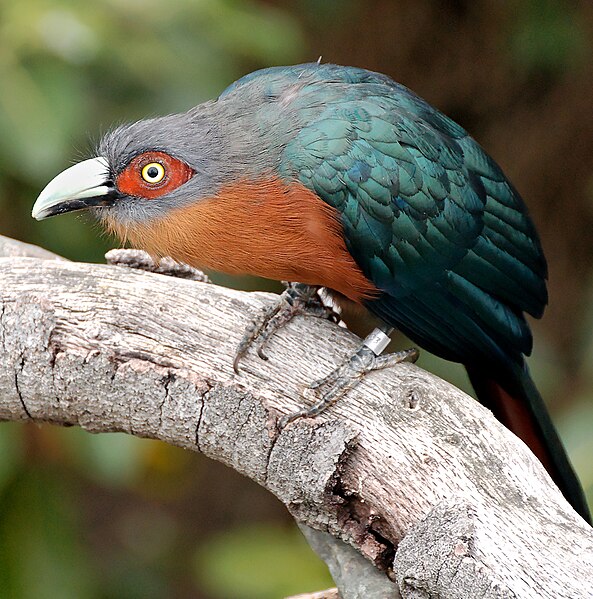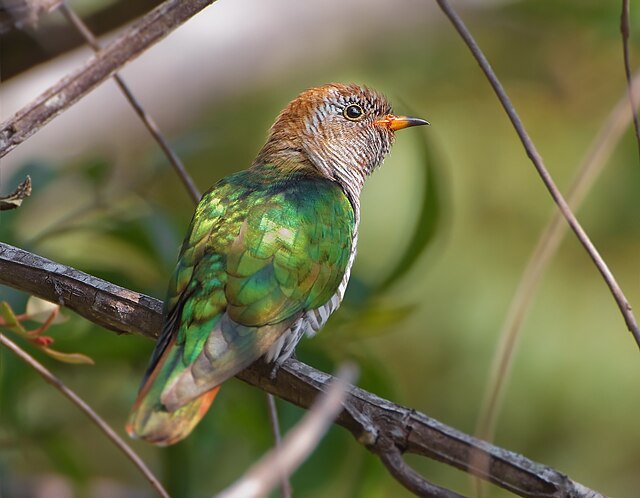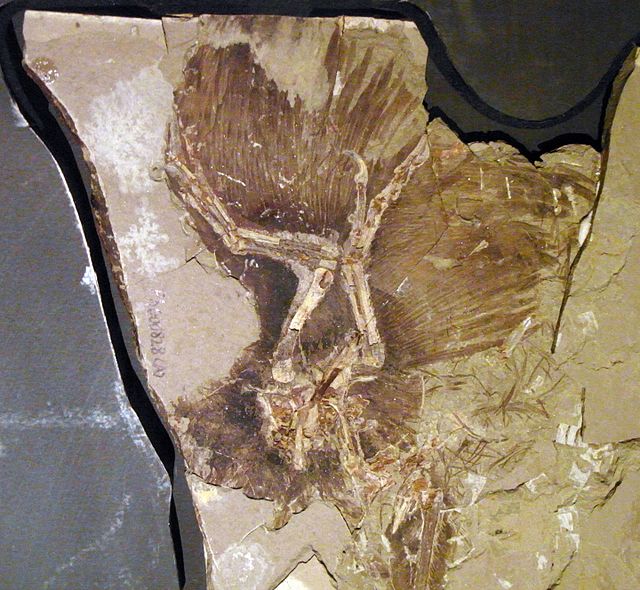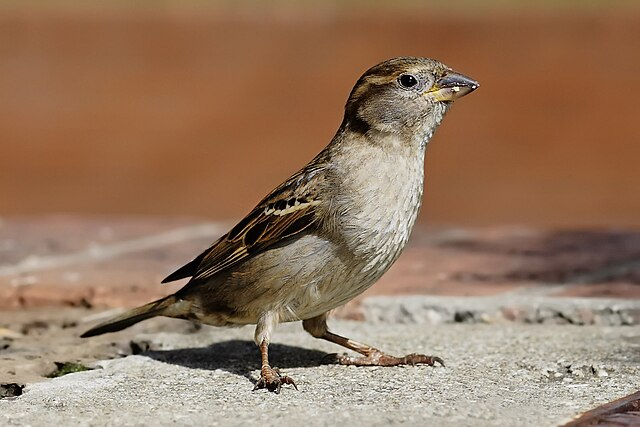Cuckoos are birds in the Cuculidae family, the sole taxon in the order Cuculiformes. The cuckoo family includes the common or European cuckoo, roadrunners, koels, malkohas, couas, coucals, and anis. The coucals and anis are sometimes separated as distinct families, the Centropodidae and Crotophagidae, respectively. The cuckoo order Cuculiformes is one of three that make up the Otidimorphae, the other two being the turacos and the bustards. The family Cuculidae contains 150 species, which are divided into 33 genera.
Cuckoo
The chestnut-breasted malkoha is typical of the Phaenicophaeinae in having brightly coloured skin around the eye.
Some species, such as the Asian emerald cuckoo (Chrysococcyx maculatus) exhibit iridescent plumage.
The great lizard cuckoo is a large, insular cuckoo of the Caribbean.
Birds are a group of warm-blooded vertebrates constituting the class Aves, characterised by feathers, toothless beaked jaws, the laying of hard-shelled eggs, a high metabolic rate, a four-chambered heart, and a strong yet lightweight skeleton. Birds live worldwide and range in size from the 5.5 cm (2.2 in) bee hummingbird to the 2.8 m common ostrich. There are over 11,000 living species, more than half of which are passerine, or "perching" birds. Birds have wings whose development varies according to species; the only known groups without wings are the extinct moa and elephant birds. Wings, which are modified forelimbs, gave birds the ability to fly, although further evolution has led to the loss of flight in some birds, including ratites, penguins, and diverse endemic island species. The digestive and respiratory systems of birds are also uniquely adapted for flight. Some bird species of aquatic environments, particularly seabirds and some waterbirds, have further evolved for swimming. The study of birds is called ornithology.
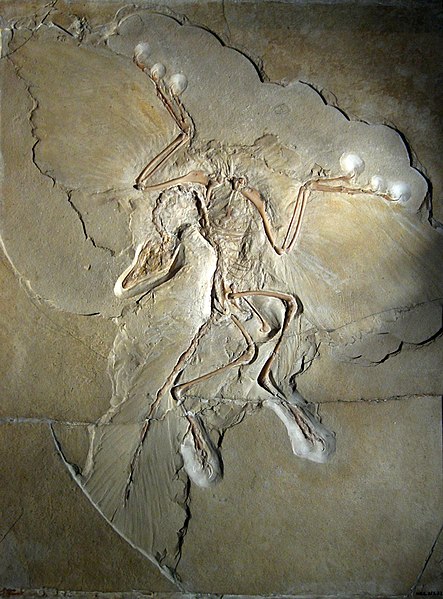
Archaeopteryx is often considered the oldest known true bird.
Anchiornis huxleyi is an important source of information on the early evolution of birds in the Late Jurassic period.
Confuciusornis sanctus, a Cretaceous bird from China that lived 125 million years ago, is the oldest known bird to have a beak.
The range of the house sparrow has expanded dramatically due to human activities.


